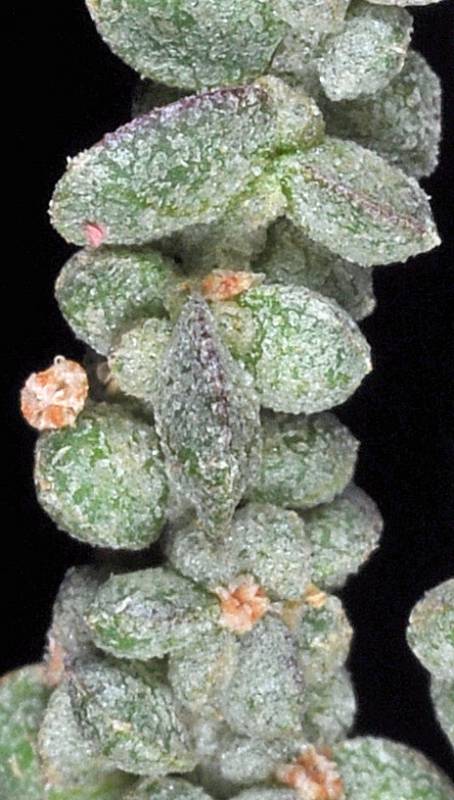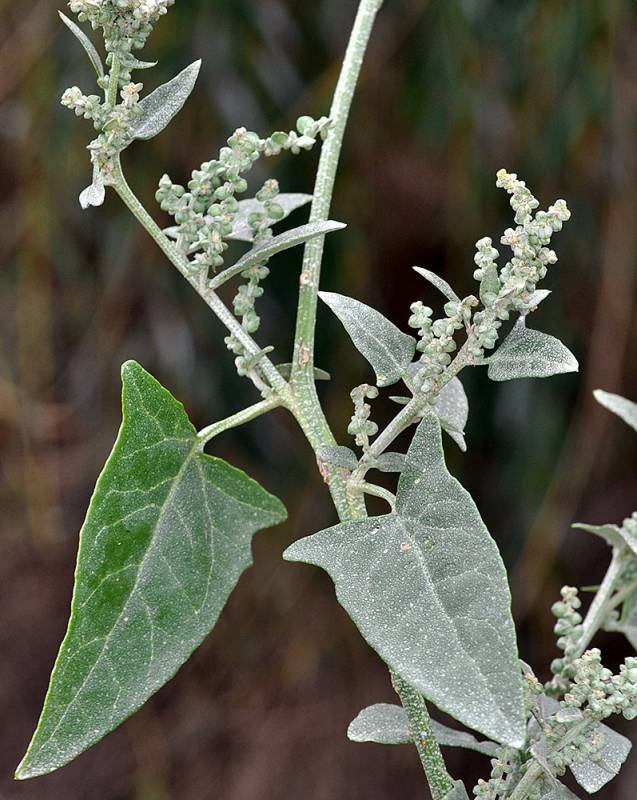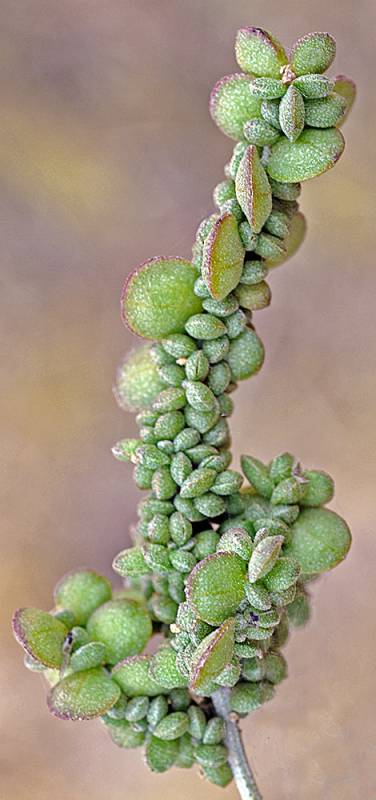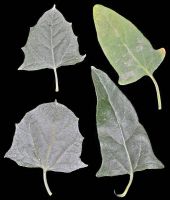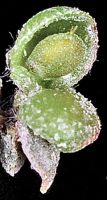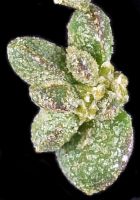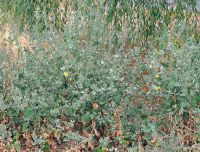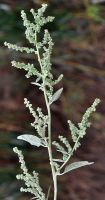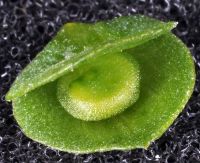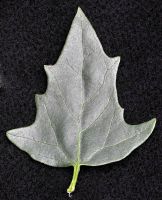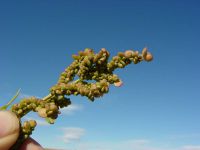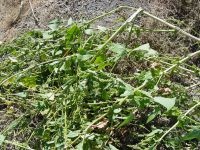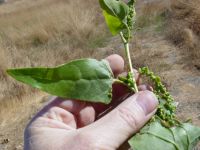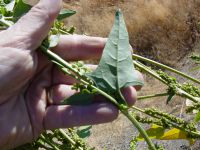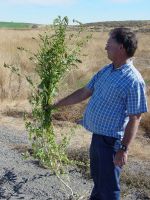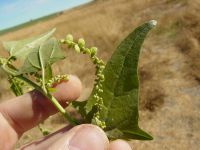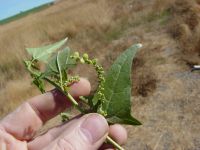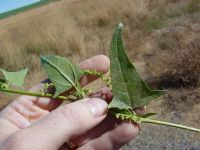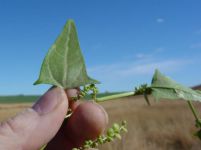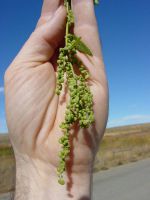Distribution: Occurring east of the Cascades crest in Washington; British Columbia to California, east to the Rocky Mountains and Great Plains; also in eastern North America.
Habitat: Riparian zones and adjacent fields; tolerant of alkaline.
Flowers: June-August
Origin: Introduced from Eurasia
Growth Duration: Annual
Conservation Status: Not of concern
Pollination: Wind
Monoecious, weedy annuals, the stem erect, branching from the base, 5-15 dm. tall.
Leaves alternate except the lower cauline; petioles 2-3 cm. long; leaf blades triangular to lance-triangular, green on both sides, 30-120 mm. long and 12-90 mm. wide, usually hastate, the margins entire or irregularly dentate.
Flowers in terminal or axillary panicles 6-25 cm. tall; staminate flowers with 5 sepals, 5 petals and 5 stamens; pistillate flowers dimorphic, lacking a perianth, the pistil naked, enclosed with a pair of leafy bracteoles; stigmas 2.
Fruiting bracteoles ovate, of 2 sizes; larger ones 5-6 x 5 mm., smaller ones 2 x 2 mm. Seeds of larger bracteoles yellowish brown, of smaller bracteoles, black.
Publication: Beitr. Fl. Russl. 272. 1852.
PNW Herbaria: Specimen records of Atriplex heterosperma in the Consortium of Pacific Northwest Herbaria database
WA Flora Checklist: Atriplex heterosperma checklist entry
OregonFlora: Atriplex heterosperma information
E-Flora BC: Atriplex heterosperma atlas page
CalPhotos: Atriplex heterosperma photos

